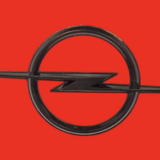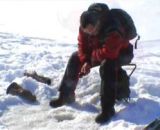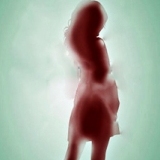- Forum
- Photography and Camera Forum
- Taking the Photo | Editing | The art of Photography!
- Beginner Photography Forum
- How do you select your aperture in your photos?
How do you select your aperture in your photos?
-
 Topic Author
Topic Author
- Storz
- Has the Hang of it
- Followers: 47
- Posts: 84
-
Points:
1622
Post #719250
Thank you for your help!
-

- Nikon Shooter
- Oh Wise One
-
- 3S 3X 810 850
- Followers: 197
- Posts: 13795
-
Points:
88932
Post #719257
1, make sure you hit the right ƒ for a correct exposure and
2, control the DoF.
With a bit of practice you will be fluent in the selection.
Light is free… capturing it is not!
-

- Ozzie_Traveller
- Apprentice
-
- Currently using a Panny FZ-300 and FZ-2500 with occasional use of a Panny mirrorless G-series
- Followers: 124
- Posts: 2713
-
Points:
54276
Post #719266
The aperture settings in the camera are used for three main things ..... a) exposure control in conjunction with the best shutter speed, -or- b) to create / determine the Depth-of-Field that you want for the scene, and/or c) to determing the level of image sharpness from the centre to the corners of the photo
Looking at these in reverse ... sharpness - if you use a magnifying glass to look at a subject, you will quickly see that the edges of the image are blurry when compared with the middle. Camera lenses are much better, but as we are a fussy lot !! we want good edge sharpness as much as possible. So comes the recommendation to use a mid-range aperture for good image quality, and to be aware that when using the lens at wide-open (small aperture numbers) then the IQ may not be perfect
Secondly- when you have a subject that needs more or less Depth-of-Field, then you can run the apertures down to F16, F22 if needed, or out to F4 maybe if you do not need DoF
Finally, it is alwayas a balancing act (like a child's see-saw) to balance the Aperture to the best Shutter speed so that the exposure is correct and the end result is what you wanted
Remember also that the aperture number is the bottom of a fraction ... the diameter of the aperture hole is a fraction of the millimetres of the lens focal length. So small numbers F2, F4 etc are 1/2 - 1/4 of the focal length and large numbers F16, F22 are 1/16 or 1/22 of the focal length
Hope this helps
Phil from the great land Downunder
www.flickr.com/photos/ozzie_traveller/sets/
-

- Carter Gledhill
- Lone Wolf
-
- Nikon D810
- Followers: 66
- Posts: 203
-
Points:
3529
Post #719342
-

- KenMan
- Master of the Lens
-
- Nikon D810
- Followers: 214
- Posts: 1551
-
Points:
12626
-
 Topic Author
Topic Author
- Storz
- Has the Hang of it
- Followers: 47
- Posts: 84
-
Points:
1622
-

- db3348
- Master of the Lens
-
- Several : Canon digital , Nikon and Mamiya film cameras
- Followers: 70
- Posts: 1943
-
Points:
23082
Post #719670
But remember that the amount of background blur depends not only on aperture , but also on distance from you to subject and distance from subject to background , and focal length of lens (from same camera position) .
Wider aperture (e.g. f1.4 , f/2 , f/2.8 ... ) : more background blur
Smaller aperture (e.g. ... f/11, f/16 , f/22 ) : less background blur
Closer camera-to-subject distance further subject-to-background distance : more background blur
Further camera-to-subject distance , closer subject-to-background distance : less background blur .
Shorter focal length (from chosen camera position) : less background blur
Longer focal length (from same camera position) : more background blur
Hope that helps .
-

- hghlndr6
- Master of the Lens
- Nikon: P510, D600, D7100
- Followers: 1222
- Posts: 1650
-
Points:
28119
Post #719680
Storz wrote: So is there an aperture you use most when you don't care about background blur?
Thank you all.
Blur can also occur in the foreground. So Background blur isn't my deciding criteria ... Depth of Field is.
The first thing I ask myself before shooting anything is, "do I have any depth of field concerns?" The answer is usually yes. I usually want either a deep or a shallow DOF, so aperture will be my priority and I'll set the aperture small or large accordingly. If the answer is no, then I'll use something like f/8 or f/11.
The second question I ask myself is "do I have any shutter speed concerns?" If the answer is no, then I'll be working with aperture priority, as above. If the answer is yes, as in stopping motion or as in showing motion blur, and the answer to question 1 is also yes, then that's a problem that I'll try to resolve either by working completely in manual mode and adjusting ISO, or by enabling auto-ISO.
-

- Garbo
- The Lounger
-
- Nikon D300
- Followers: 188
- Posts: 1283
-
Points:
10443
-

- Stacy Craig
- Snapobsessed
-
- Canon 5D Mark III
- Followers: 134
- Posts: 429
-
Points:
4956
Post #720230
-

- Hoss
- Photography Hooked
-
- Nikon D7000
- Followers: 114
- Posts: 842
-
Points:
5545
-

- Prago
- Master of the Lens
-
- Nikon D300
- Followers: 232
- Posts: 1667
-
Points:
13360
Post #721943
SWM into chainsaws and hockey masks seeks like-minded SWF. No weirdos, please
-
 Topic Author
Topic Author
- Storz
- Has the Hang of it
- Followers: 47
- Posts: 84
-
Points:
1622
-

- JaneK
- Oh Wise One
-
- Nikon D750
- Followers: 1672
- Posts: 13380
-
Points:
82299
-

- EtherArts
- New Kid On The Block
-
- Followers: 49
- Posts: 16
-
Points:
1486
Post #755499
- Forum
- Photography and Camera Forum
- Taking the Photo | Editing | The art of Photography!
- Beginner Photography Forum
- How do you select your aperture in your photos?
Latest Reviews
The Olympus Pen E-P7 is an affordable micro four thirds mirrorless camera with 4K video capabilities, a 20.3MP sensor, and 121 focus points, making it a solid entry-level camera for beginners.
The Panasonic G9 II is a 25.2-megapixel micro four thirds camera with numerous features that make it punch out of its weight class, like 779 AF points, 5.8K video, and weather sealing.
The Fujifilm XT5 is a 40MP mirrorless camera capable of 6.2K video at 30p. With those specs, it’s an ideal choice for photographers needing a camera to pull double duty for imaging and video.
The Canon EOS R100 is an entry-level mirrorless camera introduced in 2023. But just because it’s an entry-level camera doesn’t mean it’s a bare-bones camera. Find out why in this review!
Forum Top Posters
-
1Spencer Posey 1 post
-
2Hassner 1 post
Latest Articles
In this guide to the bokeh effect, you’ll learn what bokeh is and the factors involved in creating it. You’ll also explore some beautiful example images to spark your creativity with bokeh!
Upgrade your kit in 2024 with the best intermediate camera on the market! The question is, what camera fits the bill? We’ve got three top options for you to choose from in this buyer’s guide.
The best photography jobs right now are a mix of tried-and-true gigs like wedding photography and new jobs highlighting AI’s capabilities, travel, and videography.
The Olympus Pen E-P7 is an affordable micro four thirds mirrorless camera with 4K video capabilities, a 20.3MP sensor, and 121 focus points, making it a solid entry-level camera for beginners.
Starting a photography business is one thing; sustaining your business over a long period of time is another. Use the tips in this professional photography guide to build something with longevity!
The Panasonic G9 II is a 25.2-megapixel micro four thirds camera with numerous features that make it punch out of its weight class, like 779 AF points, 5.8K video, and weather sealing.
Cinematic photography is an interesting genre that combines photographic and videographic skills along with effective storytelling techniques. The result? Highly impactful images!
Newborn photography requires skill, the right gear, and a lot of patience. This beginner’s guide discusses critical topics that will help you be more prepared for before, during, and after the shoot.

















